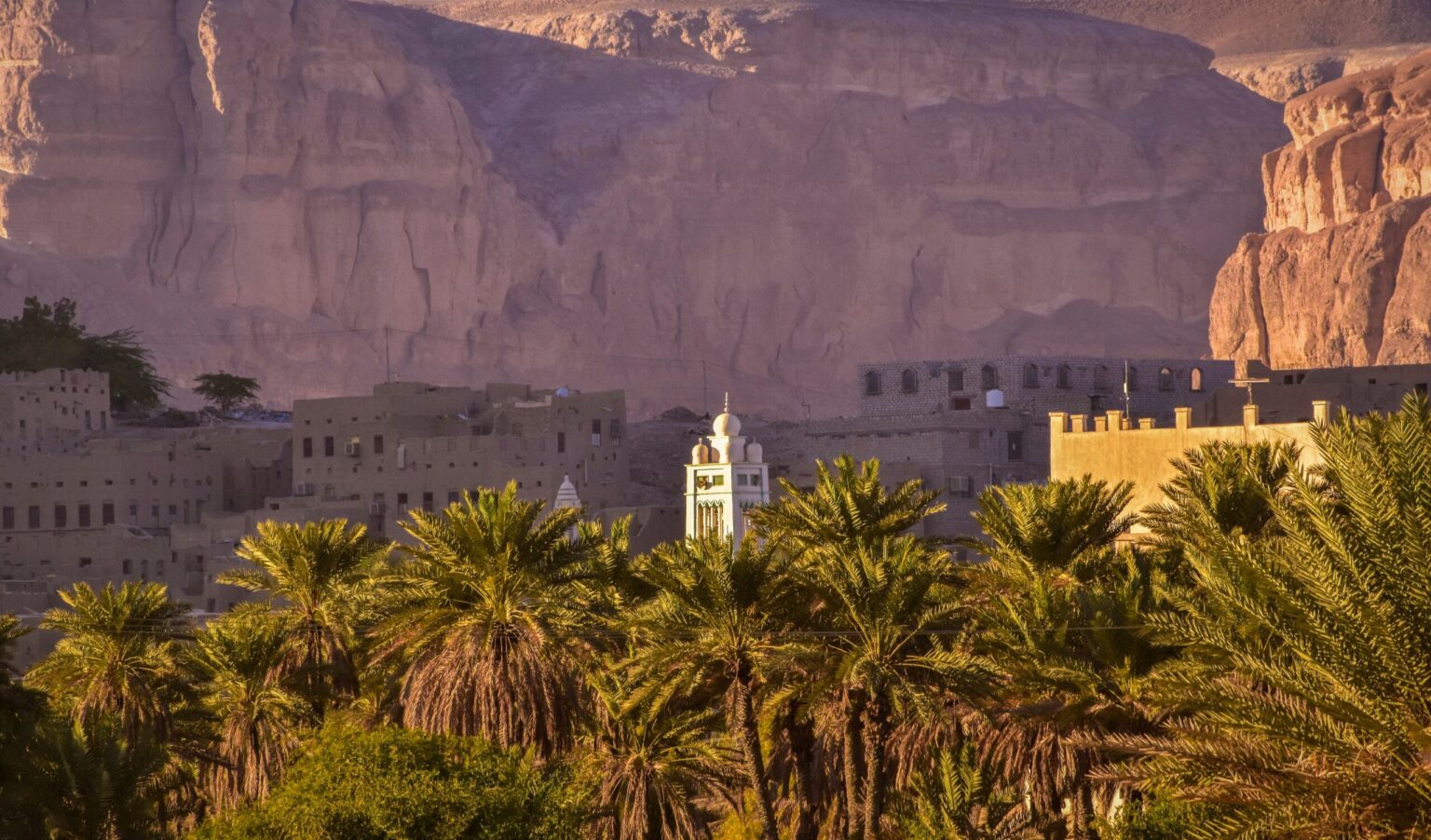Spring 2022 saw a number of major political changes in three war-torn Muslim-majority countries. In March, the interim Libyan government led by Abdulhamid Dabaiba was attacked by erstwhile supporters after postponing the election. In April, a ceasefire between the Houthis that control Sanaa and the Gulf-backed Yemeni “government” saw the figurehead of the latter coalition, Abdrabbuh Hadi, replaced by a junta of field commanders. And in May, Somali ruler Mohamed Farmaajo stepped down after a long-postponed election to give way to a predecessor. Each of these three wars—in Libya, Yemen, and Somalia—has unique features, but they also share common patterns. In each case, a weak state was bound by a dictator by manipulating and counterbalancing different sectors of society, leading to civil war, government collapse, the intervention of regional powers, and intense competition over largely ceremonial roles in a reconstructed state. The result has been interminable deadlock and ineffectiveness by the internationally recognized government, enabling its rivals—such as the Arab Army in Libya, the Shabaab Movement in Somalia, and the Houthi Movement in Yemen—to increase their strength.
These three countries are marked by relative ethnic and religious homogeneity; Yemen is entirely Muslim and Arab, Somalia is entirely Muslim and Somali, and Libya is entirely Muslim and a mixture of Arabs and Amazigh. They also share strong societal structures, such as clans and tribes, that predate and often operate independently of formal government. In addition, these countries were long ruled by military dictators—Ali Saleh, Siad Barre, and Muammar Qaddhafi—with unionist aspirations that masked a strongly personalized rule. These dictators maintained control by playing off different sociopolitical segments against each other, leading to conflict and their own eventual ouster as well as the collapse of the state. The resultant civil wars saw heavy foreign intervention to “rebuild” the state against its rivals, even as native politicians and commanders squabbled incessantly over government positions that were more important on paper than in reality. With the Muslim world having experienced so many civil wars in recent decades, this article will examine the patterns by which states whose leaders dreamt of transcending their artificial borders instead collapsed into civil strife and the mercy of outsiders.
Broad Aspirations, Narrow Roots
Italy’s defeat in the Second World War paved the way to independence for two of its colonies, Libya and the bulk of what is now Somalia. In both countries, a British interim administration paved the way for independence, with Libya put under a monarchy and Somalia a parliamentary republic. While Britain had controlled southern Yemen, with a thriving seaport at Aden and the southern hinterland, since the nineteenth century North Yemen was ruled from Sanaa by a Zaidi imamate in an uneasy partnership with northern highland clans. In the 1960s, a military coup ousted the monarchy and, after a civil war, consolidated a republic while the South won its independence from Britain by a mixture of war and economic pressure.
In each of these countries, there was considerable public sentiment for union beyond artificial borders. Libya’s monarch, Idris bin Mahdi, scion of the Sanousi order, was widely perceived as parochial and out of touch with the anticolonial sentiment of the 1950s and 1960s, which gravitated toward internationalist ideologies such as pan-Arab solidarity. Because Somalia was carved from former British and Italian colonies and comprised only part of the Somali-majority territories of East Africa (the rest being held by France, Ethiopia, and Kenya), the ideology of Somaliweyn, or Greater Somalia, was also widely popular to unify the Somali people. Despite the contrast between the conservatism of North Yemen and the radicalism of the South, there was widespread public approval for union; it was the terms of that union that were contentious, leading to two brief wars in the 1970s.
In each case, a military coup paved the way to dictatorship. 1969 was a pivotal year: the North Yemen civil war ended, South Yemen was seized by the communists, and in the autumn, both Libya and Somalia underwent “revolutionary” military coups. The incipient dictators of Tripoli and Mogadishu, Muammar Qaddhafi and Siad Barre, both promised revolutionary societal change as well as external expansion. They borrowed heavily from a mixture of socialist and nationalist ideas, with only passing references to Islam, to legitimize what was essentially personal rule. Thus Qaddhafi spent the 1970s trying to negotiate or force different union projects with his neighbours—even invading Chad and, briefly, Egypt for that purpose—while Barre mounted an ambitious but ultimately disastrous war in Ethiopia during the late 1970s.
Yet, to sustain their ambitious experiments, both dictators concentrated power within their own personal networks and especially family, thus breeding the same corruption they claimed to have fought off. Qaddhafi’s network in Libya included his Qaddafa clan and, in particular, his sons. Barre, who had so fiercely criticized clanism and tribalism, leaned increasingly on his Darod confederation and, in particular, his family. Their fear of competition led them to sideline the military from which they had originally come, leading to factionalism and mutiny. Qaddhafi formed loyalist praetorian militias led by his sons Khamis and Mutassem, while Barre’s son Maslah and son-in-law Said Morgan were among his most notorious lieutenants.
Ali Saleh, who seized power in a military coup in North Yemen in 1978, differed from the other two dictators in that he did not promise any radical change and rather represented the interests of northern military officers and clansmen. He was also more successful in pursuing a union when, in May 1990, a faction-ridden South Yemeni government agreed to merge with the North. But, as in Libya and Somalia, he concentrated power increasingly in his own network and particular family, counteracting the military from which he had come by forming a praetorian guard led by his son Ahmed and putting his nephews, Tariq and Yahya, in charge of other major units. Although not as repressive as the other two (he had an uneasy coalition with the Islah party, which his right-hand man cavalry commander Ali Muhsin represented, and held some nominal elections), Saleh’s rule was still increasingly centered on his family.
The resultant alienation provoked revolts. In Somalia, Barre was especially brutal in crushing a northern revolt by the Isaq confederation but also faced revolts by dissident officers and officials in the late 1980s. In Libya, Qaddhafi crushed a military revolt in the 1980s and an Islamist revolt in the 1990s. And in Yemen, Saleh first defeated a southern secession in 1994 and then confronted the northern Houthis in a long on-off war from 2004. In both conflicts, Saleh made extensive use of the Islah faction led by Muhsin, partly in order to weaken them and prepare the way for succession for his son. This manipulation of potential rivals was a favoured technique of the Yemeni dictator, who once cynically remarked that ruling the country was like “dancing on the heads of snakes.” Thus, he played different “snakes” off one another.
Civil War Becomes Regional War
Snake dancing was a risky game, and the result was civil war. Barre was the first to fall, ousted in early 1991 by a loose coalition of militias. He made a last, destructive attempt to recapture power in 1992, by which point the northern Isaq had already broken away to form the practically independent but unrecognized Somaliland state. The ferocious struggle between militias, with different commanders emerging to champion different clans’ interests in southern Somalia, saw Ethiopia repeatedly invade Somalia and play off rival militias against each other.
An alternate power-sharing formula advocating regional federalism was eventually cobbled together by regional countries. However, another Ethiopian invasion—this one aimed at ousting an Islamist coalition that had briefly restored order to Mogadishu in 2006—was required to impose this formula. When that invasion was enmeshed by Somali resistance, yet another power-sharing deal was brokered by Djibouti, which won over Islamist leader Sharif Ahmed and his followers in return for leading the government. The remainder of the Islamist insurgency was soon swallowed up by Shabaab, the most radical and ambitious of the opposition groups. The government’s shaky presence in Mogadishu depended on foreign intervention by an African Union force. But regional countries (particularly Kenya, which invaded Somalia’s south in 2011, and Ethiopia) continued to intervene in favour of their clientele, putting the government in a weak spot.
Tension repeatedly surfaced between the central government and the periphery, as well as within the centre; three-way power struggles involving the presidency, prime ministry, and parliament have been a cyclical feature of twenty-first-century Somali history. This tension was especially stark during the rule of Mohamed Farmaajo (2017-22), whose centralizing programme caused major tension within the government and the federated regions; it was something of a surprise when he stepped down after a much-postponed election yielded a victory for his predecessor, Hassan Mohamud.
Qaddhafi and Saleh were both swept away in the regional uprisings of the early 2010s. The Libyan case also involved a decisive foreign intervention by the North Atlantic Treaty Organization’s airpower, as well as the direct or indirect role of at least half a dozen foreign states—Qatar, France, the United Arab Emirates, Sudan, Turkey, Britain, the United States, and others. Each government had its own clientele in the emergent Libyan polity, which was soon polarized between a parliament that sought to purge any remnants of the ancien regime on one side and the government on the other. Following threats of a takeover by military leader Khalifa Haftar and a contentious election after the resignation of prime minister Ali Zidane, Libya split into two governments in 2014 as the sitting parliament’s troops took over the capital, while the new parliament escaped to Tobruq under the protection of Haftar’s Arab Army. This included a coalition of militias backed by Cairo that has proven more durable than other militia coalitions.
International diplomacy yielded a nominal interim government led by Fayiz Sarraj that replaced the Tripolitan parliament, but it had little means to impose itself over the Tripolitan militias on whom its security rested, let alone stop Haftar from advancing across the rest of Libya. Having swallowed up much of the east and south, in 2019, Haftar mounted a brazen assault on the capital and was only beaten after a Turkish intervention exhausted his troops. Further diplomacy produced another interim government, led by the merchant Abdulhamid Dabaiba, in Tripoli. But his failure to hold an expected election alienated many of Haftar’s enemies, who rallied behind former interior minister Fathi Bashagha. In spring 2022, Bashagha announced himself to be prime minister in league with the Tobruq group and probed into Tripoli: the rival governments of Libya were once more at loggerheads.
In Yemen, tension had been building between Saleh and the Islah bloc long before the 2011 uprising, which the latter promptly joined. As the dictator was boxed in, regional diplomacy by the Gulf states produced another compromise, where Saleh stepped down in favour of his second-in-command Abdrabbuh Hadi. But the rival blocs between the praetorian forces loyal to the Saleh family and the cavalry loyal to Islah leader Muhsin remained and mounted a series of mutinies and counter-mutinies against each other in 2012-13. The Houthis, who had taken advantage of the Saleh-Muhsin split as a way of conquering the north, now secretly made contact with Saleh’s loyalists. In 2014 they mounted a sudden offensive into Sanaa, first forcing out Muhsin and then, in early 2015, attempting a coup against Hadi. He escaped south to Aden as the Houthis overran the northern half of Yemen, and it took a major Gulf intervention led by Saudi Arabia and the United Arab Emirates to hold the attack at bay.
Nonetheless, a fundamental contradiction underlay the two “governments” in Aden and Sanaa. Hadi’s internationally recognized but largely absentee government was backed on the ground by a number of factions (including Islah, the southern separatist Intiqali Council, and others) with nothing in common except their antipathy to the Houthis. The Emirates in particular began to back Intiqali separatists, who made several attempts to seize Aden from 2018 onward. Meanwhile, the Emirates also reached out to the Salehs, who defected from the Houthis in December 2017. Ali Saleh had attempted one snake dance too many, however, and the serpent bit: the Houthis killed him, and his loyalists split into two camps, one following his son and nephews into the Gulf-backed camp while the others remained under Houthi rule in Sanaa. However, the coalition against the Houthis has continued to suffer from fractiousness, with the Emiratis in particular undermining the nominal “government” and Islah in favour of their competitors.
Though their Gulf-backed opposition has managed to hold Taiz, Hudaidah, and Marib, the Houthis continue to rule Sanaa and the north, and their adept usage of airstrikes, reaching as far afield as Saudi Arabia and the Gulf states, has given them a major bargaining tool. The upshot was that a ceasefire in 2022 also brought about a major political change: Saudi Arabia finally dispensed with the ineffectual Hadi and replaced him with a junta mostly comprising important field commanders but nominally led by former interior minister Rashad Alimi. The council is far from a united body, containing figures as distinct as Tariq Saleh and the separatist leader Aidrous Zubaidi, and it is an open question as to how long it can hold.
Conclusion
The cost of these wars has been enormous; tens of thousands have been killed, famine has repeatedly surfaced in Somalia and Yemen, and Libya’s fallout has spilled over into the Sahara. The internationally recognized governments have proven more effective on paper than in reality, with different factions vying over largely ceremonial positions underpinned by foreign intervention. International diplomacy has largely proven ineffective and is seconded by militarized regional interventions; the Emirates, Saudi Arabia, Turkey, Egypt, Kenya, Ethiopia, Iran, and others have fuelled the conflict. Steps toward resolution require a critical understanding of the patterns that brought the societies and governments of Libya, Somalia, and Yemen spiraling from dictatorship to dissolution.
For aspirational Umma-centered projects that similarly wish to transcend artificial state borders in their solidarity and sympathy, it is key to avoid repeating the mistakes of twentieth-century internationalist projects. These include putting one’s eggs unconditionally in a single basket—whether that is a charismatic leader or particular regime—and in particular when that is maintained by manipulating and dividing the very society it is meant to serve. The point of government and political groups in general, both in classical Islamic theory and in modern ideologies, is to serve society—for Muslims, the Muslim Umma and its non-Muslim coexistents—not vice versa, yet far too often governments have existed by manipulating, exacerbating, and counterbalancing social divisions. As the cases of modern civil wars in the Muslim world show, this can be a costly and counterproductive strategy.




